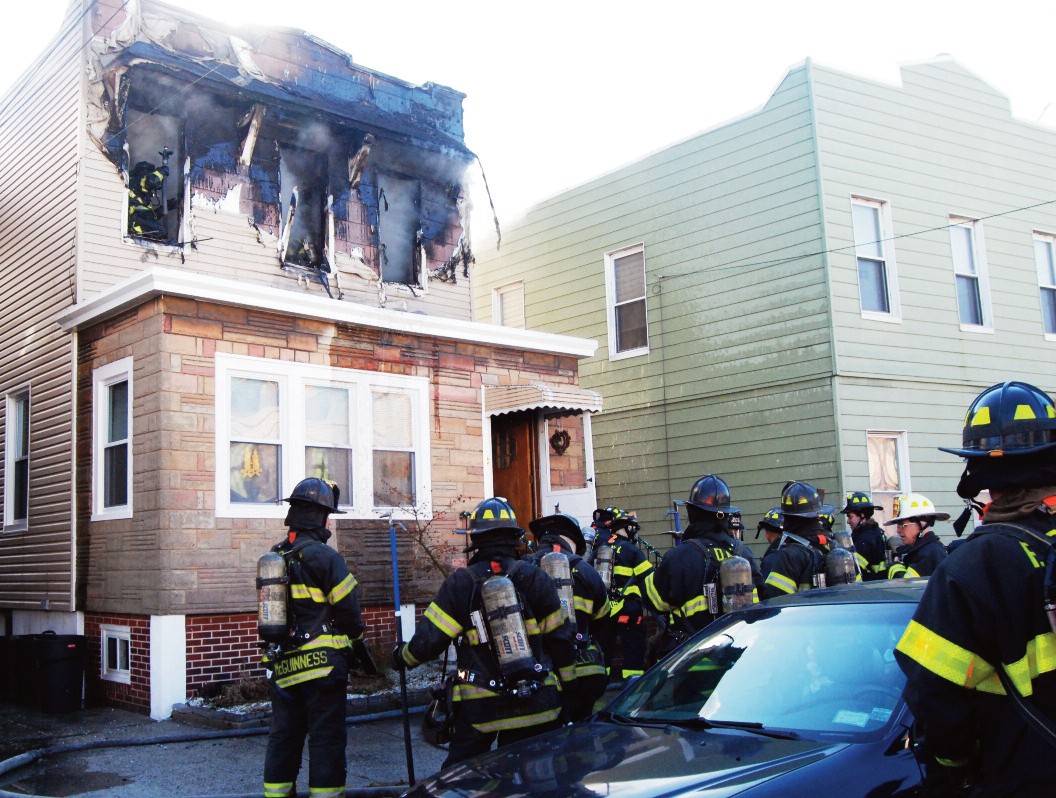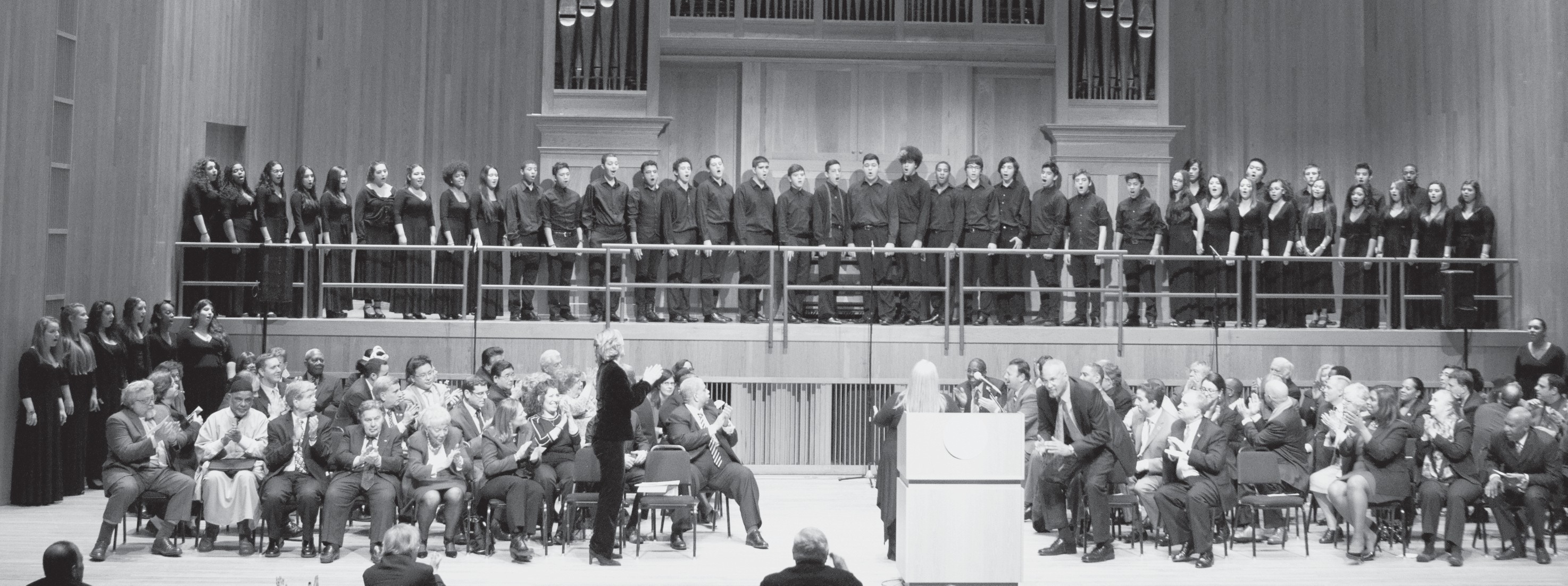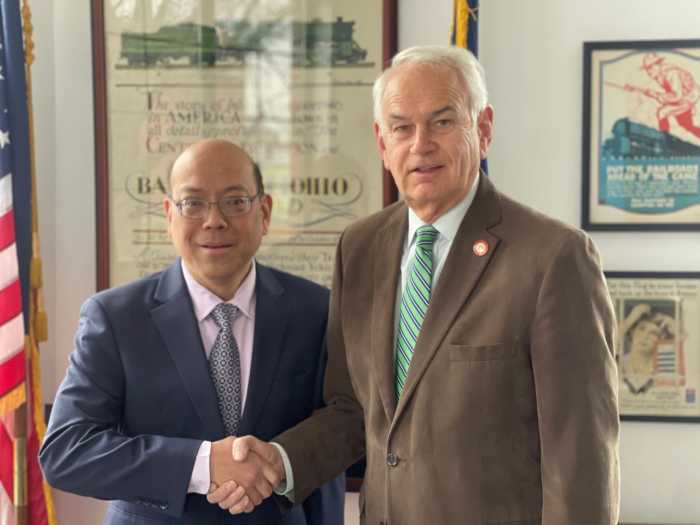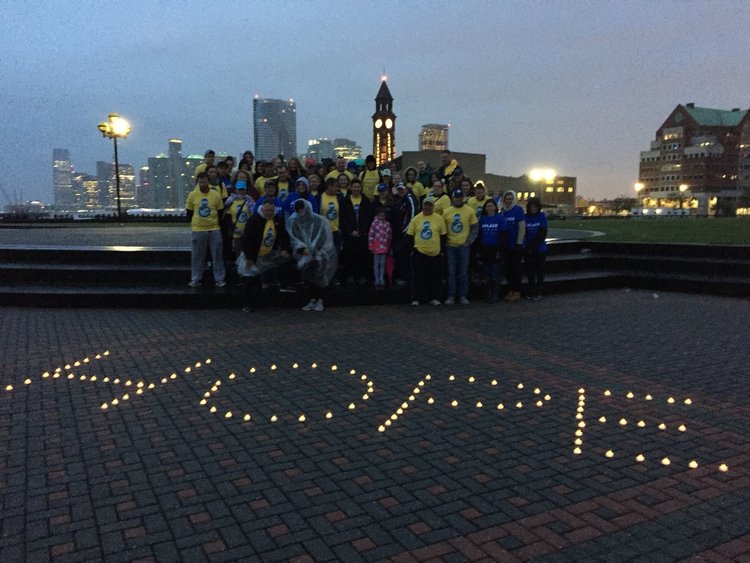Proposal Blasted At M.V. Hearing
Residents overwhelmingly denounced a proposed homeless shelter in Glendale during a Community Board 5 public hearing on the project held last Thursday, May 22, at Middle Village’s Christ the King Regional High School.

About 200 turned out for the affair and gave representatives of the city’s Department of Homeless Services (DHS) and Samaritan Village-the nonprofit group behind the proposal-an earful regarding the creation of a transitional housing shelter for up to 125 families at 78- 16 Cooper Ave., a long-vacant and possibly contaminated industrial site.
Thirty individuals-including local elected officials and District Manager Gary Giordano-took the microphone to offer a laundry list of reasons why the proposed shelter should be stopped. Some expressed concerns about the cost-effectiveness of the project, while others cited inhumane conditions and crime at other city homeless shelters, as documented in published news reports.
Opponents also stated funds for the project would be better spent on housing relief programs, while others questioned the legitimacy of Samaritan Village, the subject of an audit by the State Comptroller’s office for alleged misuse of state funds.

Giordano and other attendees called the project “senseless,” noting it received preliminary DHS approval last December, during the waning days of the Bloomberg administration. They pointed out the plan bucks policy statements made by Mayor Bill de Blasio, who favors providing subsidies to prevent potentially homeless persons from being evicted.
“I think it’s disgraceful that this plan got this far,” Giordano said, garnering applause from the audience. “I don’t think you could pick a much more worse site to house people-and to house children, it’s even worse.”
Toward the conclusion of the hearing, DHS Deputy Commissioner Lisa Black and Samaritan Village Executive Vice President Douglas Apple heard jeers and snickers from the audience in responding to questions Board 5 Chairperson Vincent Arcuri asked on behalf of attendees regarding the site’s condition and potential alternatives.
Inside the plan
The proposed shelter-which would be leased by Samaritan Village and the DHS from property owner Michael Wilner-is estimated to cost $27 million over the first five years of operation. Reportedly unused for the better part of several decades, the factory itself would need to be extensively renovated in order to be made suitable for residential use.
The shelter is needed, Black explained, to help the city fulfill a homeless housing mandate outlined in the State Constitution. Each family will be housed in a separate living quarter that includes a small kitchen and a bathroom.
Black stated the city would not pay for the renovation of the building, nor would it pay Samaritan Village until the shelter is opened. Arcuri disputed the $27 million operational cost figure, noting that an analysis conducted by Board 5 found the total to be about $7 million less.
Though Black stated the shelter would house “single mothers with children,” Apple indicated the shelter would be open to “husbands, wives and children” under 18 years of age. The facility would have 35 staff members, including 24-hour security details, and compel residents to abide by a code of conduct, including a 10 p.m. daily curfew and a ban on visitors without prior authorization.
Children residing at the shelter, according to Apple, would be assigned to local public schools. Samaritan Village would also offer many support services including case management and transportation (via two vans) to job training and doctor’s appointments.
Apple stated the nonprofit group appreciated community concerns on the matter, and offered to form a community advisory board with local residents and civic leaders to meet regularly and discuss issues related to the shelter’s operations.
“We will be, and want to be, a good neighbor and be conscious of the issues,” he told residents. “We all know the struggles facing homeless families in the city. We see this as a way to help them get back on their feet.”
Something ‘doesn’t smell right’
Samaritan Village’s intentions, however, were called into question by Dawn Scala, the first Glendale resident to speak. She pointed to the audit by State Comptroller Thomas DiNapoli’s office which indicated that the nonprofit entity may have misused hundreds of thousands in state funds designed to assist methadone treatment clients.
Instead, according to the audit, funds were used to provide employee bonuses and finance trips unrelated to services Samaritan Village agreed to provide.
Scala also claimed there were potential conflicts of interest regarding the shelter plan, as several ranking members of Samaritan Village-including Apple and Tino Hernandez, the charity’s president and CEO-previously held ranking positions in the city’s Department of Housing Preservation and Development and the New York City Housing Authority, respectively.
“As an auditor, that doesn’t smell right to me,” Scala said.
Gloria McClure, a Glendale resident who previously lived in Briarwood, blasted Samaritan Village for its operations of its shelter in her former neighborhood-and feared similar problems would be repeated in and around the Cooper Avenue site .”I left Briarwood and came to Glendale to get away from Samaritan Village,” she said. “One day, the residents were forced to vacate the premises. They took over the parks; they took over the shopping areas. They’re not the nice, little, two parent, 2.5 children. … These are recovering drug addicts; these are not desirable people.”
Find another way to help
Board 5 member Cathy Sumsky and other residents voiced opposition not only to the Glendale shelter, but to the concept of large homeless shelters in general. They spoke in favor of subsidies and other programs designed to keep families in their homes and out of the shelter system.
“No one wants to be homeless; homelessness is a horrible issue,” she said. “With that said, the last place anyone would want to go is a homeless shelter-especially if you have children. … Homeless shelters do not work.”
“Why are our tax dollars being used on homeless shelters instead of more affordable housing?” Sumsky asked. “It just doesn’t make sense.”
“The mayor is counting on all new policy restrictions he’s putting in play to ultimately reduce shelter census,” added Board 5 member Kathy Masi. “So why would DHS go in the opposite direction and even entertain a possibility of another shelter-unless, of course, they intend to squander more of our taxpayer dollars?”
“I believe the solution lies in stable employment and affordable housing-the latter having already been made a priority by the de Blasio administration,” she stated. “The proposed shelter is only a large, expensive human warehouse-and won’t get people out of homeless. … Circumstances that lead to homelessness are very complex, and therefore the solution must be complex, long-term and realistic.”
Speaking on behalf of the Juniper Park Civic Association, Tony Nunziato stated the civic group supports “homeless shelters that blend into the neighborhoods,” adding that the community could accept small, “three-family homes” that will “not have a negative impact on the community.”
Not close to public transit
Glendale resident Timon Kalpaxis questioned the location of the site, noting that it is several blocks away from local bus lines and on an industrial corridor of Cooper Avenue.
“That thoroughfare is extremely dangerous. You’ll create a safety hazard-not only for the community, but for those who live there,” he said. “Does someone have to die first on one of those roads before we take and pause and say it’s not appropriate?”
John Maier, co-chair of Board 5’s Public Transportation Committee, echoed those sentiments, noting that he “took exception” to the DHS’ conclusion that the shelter site is close to public transportation.
“There is no direct bus service” to the shelter and the nearest subway station-the Metropolitan Avenue M train stop-is located more than a mile away, he said. “This cannot be considered convenient or accessible.”
Environmental concerns
Giordano and other speakers touched on the industrial nature of the shelter site. Reportedly, 78-16 Cooper Ave. once housed an airplane parts manufacturer and other businesses that used noxious chemicals and heavy metals as part of the production process.
This leads many to believe the site may have unspecified contamination. Black stated an environmental study is underway, but there was no timetable as to when it would be completed. The results would be provided to the community board once they are ready, she noted.
Moreover, Giordano noted, the proposed shelter site is located adjacent to a “chemical storage facility,” known as Independent Chemical Corporation, which stores and distributes an array of chemicals, including industrial solvents and corrosive materials.
Given concerns about the shelter site’s safety, Giordano was particularly appalled the DHS found it suitable for a homeless shelter or any kind of residential development.
Further warnings
Pauline Loreng warned that the city DHS could change the use of the shelter at any time, and could allow for registered sex offenders or exconvicts to reside. Other shelters set up across the city, including the Skyway Motel in South Ozone Park, experienced crime and other problems related to former criminals living in-and loitering around-the site.”Once the Cooper Avenue is shelter is in place, the city and DHS can quickly and quietly convert the shelter format without adequate community notification or an opportunity for input,” she said. “It is extremely disturbing, considering the proximity of the Cooper Avenue site to schools, parks and other sites catering to children.”
Real estate broker Jolanta Golaszewski charged the shelter’s presence could lower property values around the neighborhood and add further strain to local schools and infrastructure.
“Is it right to help one group of people by hurting the other?” she asked. “Before we build this shelter, we have to do what’s right for our people and the neighborhood.”
Elected officials speak
Three local lawmakers who previously opposed the plan-State Sen. Joseph Addabbo, Assemblyman Mike Miller and City Council Member Elizabeth Crowley- repeated their concerns at last Thursday’s hearing. Assemblyman Andrew Hevesi, another opponent of the project, was also in attendance, but did not speak.
“We need to open the door to dialogue as this process goes along. The dialogue between those in the city and my constituents is critical,” Addabbo said. “Our residents’ concerns have to be heard each and every day.”
“If our goal is to help homeless people, then let’s help them stay in their homes,” added Miller, who favored providing rent relief subsidies.
Crowley stated it would be more cost efficient for the city and state to reinstate the discontinued rent voucher program, which offered up to $1,500 a month to at-risk families in rental assistance. The city has set aside $80 million in the current preliminary budget for the program, but she urged residents to call on the mayor and governor to provide up to $200 million in funds.
“Building a shelter that won’t be ready for two years simply does not make sense,” Crowley said, pointing to the various affordable housing programs the city plans to implement. “The vouchers starts at about $1,500 a month, half of what it costs the city to house a family in the shelter system.”
“Doesn’t that make more fiscal sense to have vouchers so families can stay in the communities where they want to live, and not have to go into a shelter?” the legislator remarked.
Addressing a ‘critical problem’
Just one individual-Jeff Kaufman of Glendale-spoke in favor of the proposed shelter. A high school teacher living a quarter-mile from the shelter site, Kaufman noted some of his students are in the homeless shelter system and aren’t “bad kids.”
“I think it’s important that we all understand that homelessness is a citywide problem; it’s a countrywide problem, he said. “I hear that people are concerned how this facility will work into a community that has not worked” to address the problem. “I am concerned with the fact that we have avoided for at least this constitutional mandate has been in existence … the fact that we have very few homeless services.”
Q&A
Throughout the public hearing, some speakers publicly posed questions to DHS and Samaritan Village about the project. Arcuri recorded the questions and voiced them during the Q&A session once all registered speakers had their turn at the microphone.
The DHS was asked why it rejected a plan to create a homeless shelter at the Pan American Hotel, which closed earlier this year and later reopened as a hostel. Black stated the DHS did not believe the hotel was suitable since it didn’t “have kitchens and bathrooms,” a statement loudly jeered by residents.
Arcuri also asked if shelter residents would be contained inside the site during daytime hours “like a ghetto.” Apple said no shelter residents would be locked in, as adults would be either working or attending job training seminars and children would be involved in other activities.
The chairperson then asked why the board was not provided with a copy of the DHS contract with Samaritan Village. Black indicated the contract was not final yet, as it awaits final approval from the DHS and City Comptroller Scott Stringer.
She added the DHS would provide at a later date written responses to concerns and questions raised during the hearing.
































